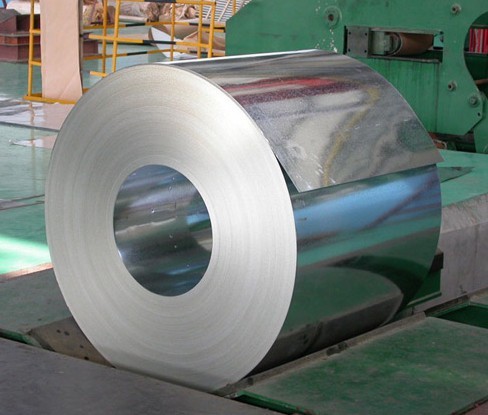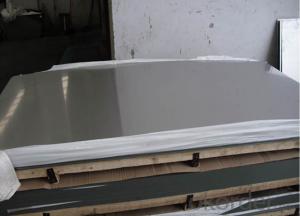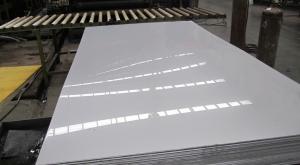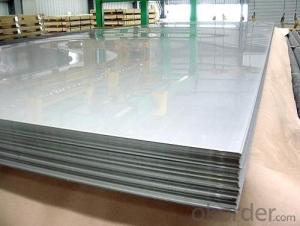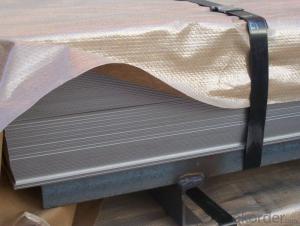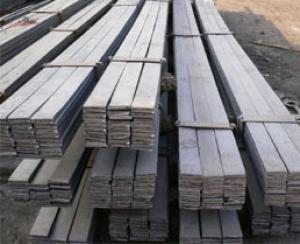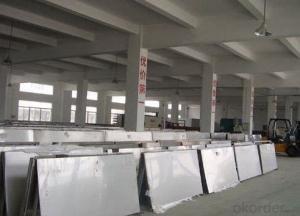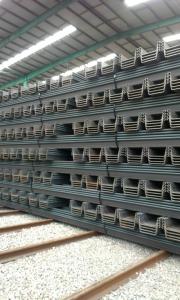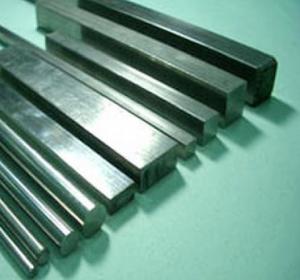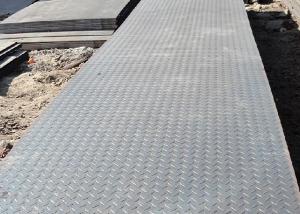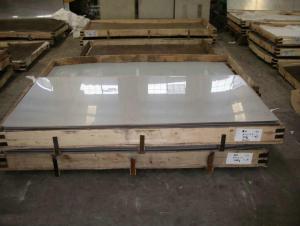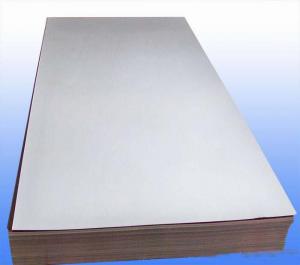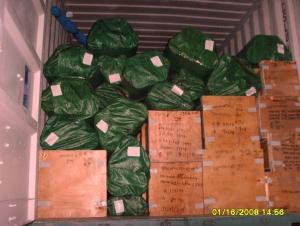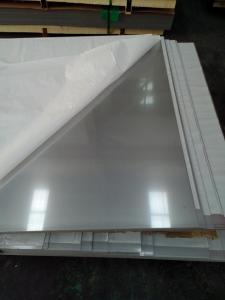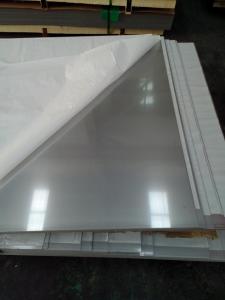High Quality Stainless Steel Profile Weld Pipe
- Loading Port:
- Shanghai
- Payment Terms:
- TT OR LC
- Min Order Qty:
- 50 m.t.
- Supply Capability:
- 5000 m.t./month
OKorder Service Pledge
OKorder Financial Service
You Might Also Like
Product Introduction of High Quality Stainless Steel Profile Weld Pipe:
Our Stainless Steel products including the stainless steel sheet/plate, stainless steel coil, stainless steel rod/bar, stainless steel angle, stainless steel strip, stainless steel flat, carbon steel products and alloy steel materials. It also can supply the processing of surface, like No.4, BA, HL, SB, 8K, and so on.
Loading Quantity of High Quality Stainless Steel Profile Weld Pipe: 25 Tons/20FCL.
Grade of High Quality Stainless Steel Profile Weld Pipe: 201, 306, 316 Etc.
Delivery Time of High Quality Stainless Steel Profile Weld Pipe: 20 days Per Container.

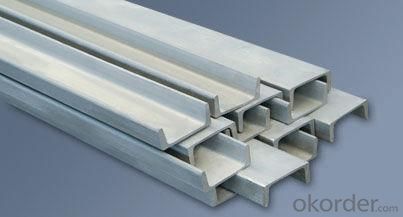
Application of High Quality Stainless Steel Profile Weld Pipe:
| Finish | Thickness | Characteristics | Applications |
| No. 1 | 3.0mm~50.0mm | Finished by hot-rolling, annealing and pickling, characterized by white pickled surface | Chemical industry equipment, Industrial tanks |
| No. 2B | 0.3mm~6.0mm | Finished by heat treatment, pickling after cold rolling, followed by skin pass line to be more brighter and smooth surface | General Application Medical Instruments,Tableware |
| No. BA (Bright Annealed) | 0.5mm~2.0mm | Bright heat treatment after cold rolling | Kitchen utensil, kitchen ware,architectural purpose |
| No. 4 | 0.4mm~3.0mm | Polishing with No. 150 to No.180 mesh abrasivesThe most popular finishes | Milk & Food processing acilities, Hospital Equipment, Bath-tub |
| HL(Hair Line) | 0.4mm~3.0mm | Finished by continuous linear polishing | Architectural purposes, escalators, kitchen ware vehicles |
Packaging & Delivery of High Quality Stainless Steel Profile Weld Pipe:
| Packaging Detail: | standard seaworthy export package or as customers required |
| Delivery Detail: | Normally according to the order quantity or upon negotiation. |
Specification of High Quality Stainless Steel Profile Weld Pipe:
1).Standard : GB,ASTM,AISI,JIS,SUS,EN
2).Material : 304,304L,304N,304LN,301,305,309S,310S,316,316L,316N,316LN,316Ti,
317,317L,321,347,201,202
3).Outside Diameter: From 4mm to 2500mm(1/8''inch-120''inch)
4).Wall Thickness : Sch5S-SchXXS(1mm-150mm)
5). Length : 3m,4m,5.8m,6m,12m or as required
6). Chemical composition:
7).Surface :Annealing ,polish,pickling,bright ,sand blast ,etc
8).Packing: 1.plastic cap with both ends 2.steel strip bundled package3.wooden case,wooden
pallet package4.container or bulk 5. as customers' requestment
9).Application:petroleum ,chemical industry,bolier ,heat exchange,high temperature
resistant transmission fluid pipe in power station,ship with pressure pipe,construction
and so on
FAQ
Q: CAN YOU PROVIDE MILL TEST CERTIFICATE?
A: YES! Mill Test Certificate for High Quality Stainless Steel Profile Weld Pipe are available.
Q: CAN YOU MAKE DDQ (DEEP DRAWING QUALITY)?
A: YES. Our material has been widely used for producing Stainless Steel Pots and Stainless Steel Sinks, which have strict request for good deep drawing quality.
Q: HOW TO GET A SAMPLE?
A: FREE samples for High Quality Stainless Steel Profile Weld Pipe are available for your checking and testing. And to get free samples, you need to send us you detailed receiving address (including post code) and your DHL/FedEx/UPS account for collecting samples, courier cost will be paid in your side.
- Q: Are stainless steel sheets suitable for food processing or medical applications?
- Stainless steel sheets are ideal for food processing and medical applications as they possess a range of beneficial properties. Firstly, their resistance to corrosion makes them perfect for environments where cleanliness and hygiene are paramount, such as food processing plants and medical facilities. Moreover, stainless steel is a non-porous material, meaning it does not absorb bacteria, germs, or odors. Consequently, it is effortless to clean and maintain high levels of sanitation, a crucial factor in both food processing and medical settings, where reducing contamination is vital. Furthermore, stainless steel boasts excellent strength and durability, enabling it to withstand harsh conditions, heavy usage, and frequent cleaning without deteriorating. This reliability and longevity make stainless steel sheets an excellent choice for these demanding applications. Additionally, stainless steel is non-reactive with both food and many medical substances, ensuring that no harmful chemicals or contaminants leach into the processed products or the patients being treated. This feature is essential for upholding the safety and integrity of both food and medical materials. To summarize, stainless steel sheets are highly suitable for food processing and medical applications due to their corrosion resistance, non-porous nature, strength, durability, and non-reactive properties. By choosing stainless steel, the highest standards of cleanliness, hygiene, and safety can be maintained in these industries.
- Q: What's the difference between 304 stainless steel and 301 stainless steel?
- 304 stainless steel is one kind of universal, which is widely used to produce good performance (corrosion resistance and formability) equipment and parts; 301 stainless steel showed obvious hardening during deformation, is used for various occasions with high intensity.
- Q: What are the different types of stainless steel sheet finishes for pharmaceutical applications?
- Pharmaceutical applications commonly utilize various stainless steel sheet finishes, each designed to meet specific requirements and provide certain characteristics and properties. 1. The most basic stainless steel sheet finish is No.1 Finish, with a rough and dull surface. It prioritizes corrosion resistance and durability over appearance. 2. No.2D Finish, also known as a "dull" finish, has a slightly smoother surface compared to No.1 finish. It is achieved through cold rolling and annealing, making it suitable for easy cleaning and maintenance in pharmaceutical applications. 3. No.2B Finish is highly popular in stainless steel sheets for pharmaceutical purposes. It boasts a smooth and reflective surface obtained through cold rolling, annealing, and pickling or passivating processes. No.2B finish offers exceptional corrosion resistance and easy cleaning properties. 4. No.3 Finish presents a semi-reflective surface with a slightly coarse texture. It is achieved by polishing the stainless steel sheet using a fine abrasive material. No.3 finish is commonly used when a decorative appearance is desired, while maintaining good corrosion resistance. 5. No.4 Finish is a favored choice for pharmaceutical applications that require both a decorative appearance and excellent corrosion resistance. It features a brushed appearance achieved by using a fine abrasive material in a linear motion. No.4 finish also provides a smooth surface that is easy to clean. 6. No.6 Finish, achieved by using a fine abrasive material in a circular motion, results in a satin-like appearance. It is often utilized in pharmaceutical applications where a high-quality aesthetic finish is desired, particularly for equipment visible to patients or visitors. To conclude, pharmaceutical applications benefit from a variety of stainless steel sheet finishes, each offering specific characteristics to meet industry needs. Whether prioritizing corrosion resistance, easy cleaning, or a decorative appearance, there is a suitable finish available for every pharmaceutical application.
- Q: Can stainless steel sheets be used for roofing?
- Indeed, roofing can utilize stainless steel sheets as they possess qualities such as durability, longevity, and resistance against corrosion, rust, and weathering. As a result, stainless steel serves as an exceptional choice for various roofing applications, including industrial, commercial, and residential projects. These sheets offer remarkable strength and the ability to endure adverse weather conditions, including heavy rain, snow, and wind. Furthermore, stainless steel exhibits fire resistance and remains free from warping or cracking, thereby ensuring a dependable and secure roofing solution. However, it is crucial to acknowledge that stainless steel roofing materials can be pricier than alternative options, necessitating the consideration of cost factors.
- Q: What are the different types of stainless steel sheet patterns?
- Stainless steel sheet patterns come in a variety of options. Some of the most commonly used patterns are as follows: 1. The plain or smooth pattern: This pattern is the simplest and most basic, offering a smooth and flat surface. 2. The diamond pattern, also known as tread plate or checker plate: This pattern has raised diamond-shaped ridges, providing excellent slip resistance. 3. The tear drop pattern: Similar to the diamond pattern, this one has raised teardrop-shaped ridges, offering enhanced slip resistance. 4. The linen pattern: This pattern resembles the texture of linen fabric, with a series of parallel lines intersected by a crisscross pattern. 5. The quilted pattern: Resembling a quilted fabric, this pattern has a diamond-shaped or square-shaped design. 6. The hammered pattern: With a textured surface resembling the marks left by a hammer, this pattern adds visual interest and dimension. 7. The perforated pattern: Featuring small holes or perforations in the sheet, this pattern allows for improved ventilation and drainage in certain applications. These examples represent just a fraction of the stainless steel sheet patterns available. Each pattern offers unique aesthetic and functional advantages, providing greater versatility in design and application.
- Q: Can stainless steel sheets be customized in terms of size and shape?
- Yes, stainless steel sheets can be customized in terms of both size and shape. They can be cut, bent, or shaped according to specific requirements, allowing for a wide range of customization options.
- Q: Are stainless steel sheets suitable for outdoor furniture?
- Yes, stainless steel sheets are highly suitable for outdoor furniture. Stainless steel is known for its exceptional durability, resistance to corrosion, and ability to withstand various weather conditions. It also offers a sleek and modern appearance, making it a popular choice for outdoor furniture that can withstand the elements and maintain its aesthetic appeal.
- Q: How do you prevent pitting or crevice corrosion on stainless steel sheets?
- To prevent pitting or crevice corrosion on stainless steel sheets, there are several measures that can be taken: 1. Proper alloy selection: Choosing the right grade of stainless steel is crucial. Grades with higher levels of chromium, molybdenum, and nickel provide better resistance to corrosion. 2. Surface finishing: Ensuring a smooth and clean surface is essential to prevent corrosion. Rough surfaces or scratches can act as initiation sites for corrosion. Polishing or electropolishing the stainless steel sheets can help create a smoother surface. 3. Regular cleaning and maintenance: Regular cleaning using mild detergents and non-abrasive cleaners is important to remove contaminants that may corrode the stainless steel sheets. It is also necessary to avoid using chlorine-based cleaners or abrasive materials that can damage the protective oxide layer. 4. Avoiding stagnant conditions: Pitting and crevice corrosion are often intensified in stagnant environments. Ensuring proper drainage and avoiding the accumulation of stagnant water or debris can help prevent this type of corrosion. 5. Control of environmental factors: Stainless steel sheets should be protected from exposure to aggressive chemicals, such as chloride-containing solutions or acidic substances. Proper ventilation and humidity control can also help reduce the risk of corrosion. 6. Use of protective coatings: Applying protective coatings, such as paints or passivation treatments, can provide an additional layer of protection against pitting and crevice corrosion. 7. Regular inspections: Conducting regular inspections to detect any signs of corrosion early on can help prevent further damage. Prompt remedial actions, such as repairing damaged coatings or addressing any drainage issues, can prevent the spread of corrosion. By following these preventive measures, the risk of pitting or crevice corrosion on stainless steel sheets can be significantly reduced, ensuring their longevity and maintaining their aesthetic appeal.
- Q: What is the elongation percentage of stainless steel sheets?
- The elongation percentage of stainless steel sheets can vary depending on the specific grade and thickness of the material. Generally, stainless steel sheets have a moderate elongation percentage, typically ranging from 40% to 60%. However, certain grades of stainless steel with higher nickel content, such as austenitic stainless steel, can exhibit greater elongation percentages, often exceeding 60%. It is important to note that elongation percentage is a measure of the material's ability to deform plastically before fracturing, indicating its ductility.
- Q: What is the machinability of stainless steel sheets?
- The machinability of stainless steel sheets can differ depending on the grade of stainless steel and its specific composition. Generally, stainless steel is known to have lower machinability in comparison to carbon steel or aluminum. This is primarily because of its higher strength, hardness, and work-hardening characteristics. During machining, stainless steel tends to work-harden, resulting in increased cutting forces and tool wear. It also has lower thermal conductivity, which can lead to higher temperatures during machining operations, further contributing to tool wear. Additionally, stainless steel has a unique chip formation behavior, often resulting in stringy and hard-to-break chips. However, advancements in cutting tool technology and machining techniques have made it possible to enhance the machinability of stainless steel. For example, using appropriate cutting tool geometries, coatings, and coolant/lubricant can help reduce cutting forces, minimize tool wear, and improve chip control. It is important to note that different grades of stainless steel can display varying levels of machinability. Austenitic stainless steels, such as 304 and 316, are generally more challenging to machine compared to ferritic or martensitic stainless steels. This is because of their higher nickel and chromium content, which contribute to their excellent corrosion resistance but also make them harder to machine. Overall, although machining stainless steel sheets may present some difficulties, with the right tools, techniques, and expertise, it is possible to achieve satisfactory machinability and produce high-quality components from stainless steel sheets.
Send your message to us
High Quality Stainless Steel Profile Weld Pipe
- Loading Port:
- Shanghai
- Payment Terms:
- TT OR LC
- Min Order Qty:
- 50 m.t.
- Supply Capability:
- 5000 m.t./month
OKorder Service Pledge
OKorder Financial Service
Similar products
Hot products
Hot Searches
Related keywords



